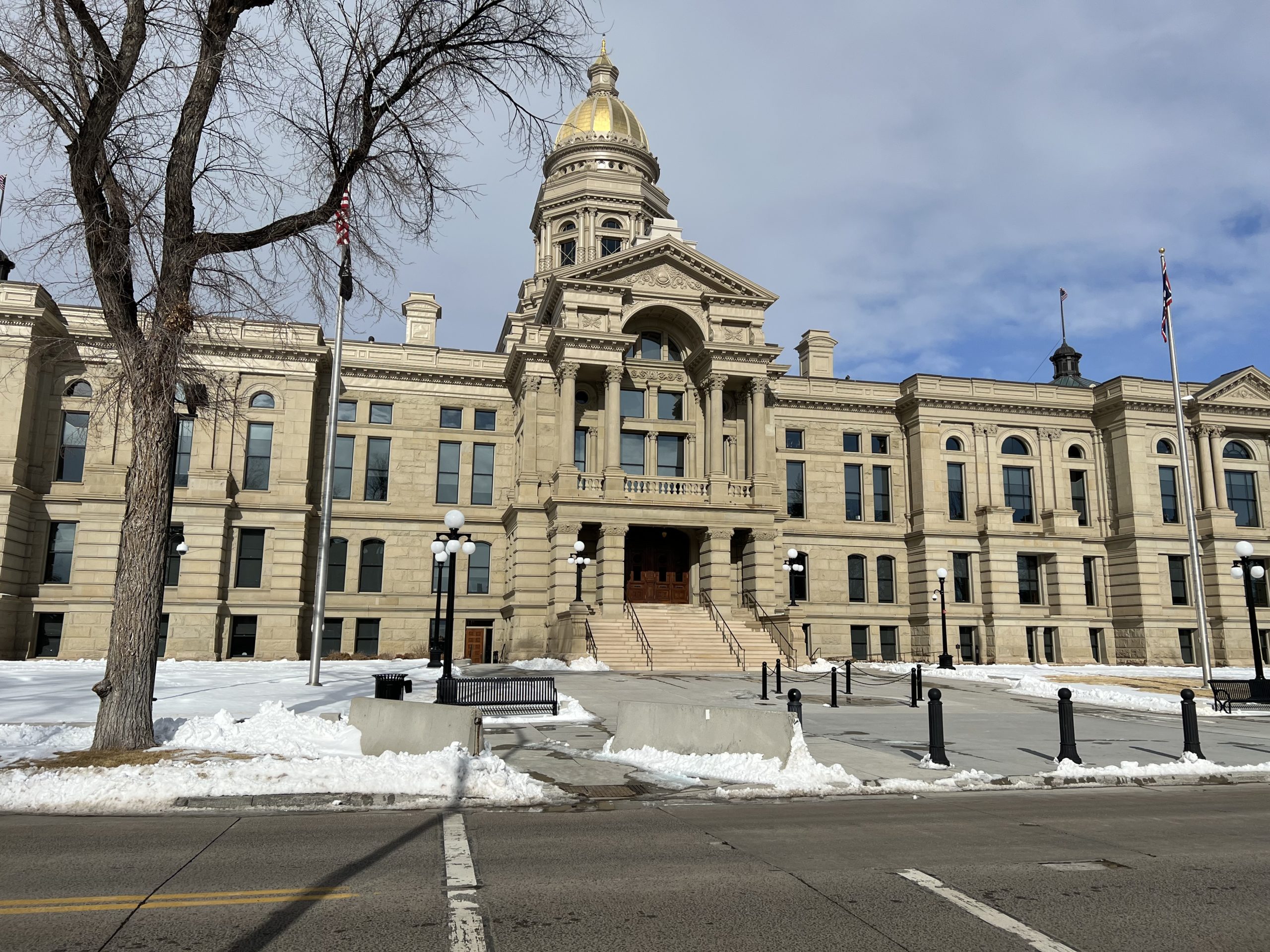
• Gordon cautions lawmakers to remain conservative in 2025-26 biennium budget letter.
By Hannah Shields
Wyoming Tribune Eagle
Via- Wyoming News Exchange
CHEYENNE — Although Gov. Mark Gordon cautioned lawmakers to remain conservative in their approach to spending money, issues such as rising property taxes, a severe lack of workforce and the need to address inflation were prioritized in his 2025-26 budget proposal.
The Biden administration continues to push policy to reduce oil and gas production, one of Wyoming’s main sources of revenue, Gordon said. In anticipation of future fiscal shortfalls, the governor recommended a focus on growing state reserve accounts and advised the Legislature to maintain a fiscally conservative approach for the upcoming budget session.
“There remains the challenge of a federal government whose executive policies are holding back Wyoming’s most profitable industries like oil, gas and coal,” Gordon wrote in his budget letter to members of the 67th Wyoming Legislature. “A realistic and conservative approach means Wyoming must strive to prepare for a future that could well see declining revenues.”
Part of the budget recommendation includes increased spending authority for the Federal Natural Resources Planning Account (FNRPA) by $1 million. Funds in this account may be used to cover legal fees for environmental or natural resource-related court cases.
Gordon said FNRPA funds “showed their value” in cases such as the one proposed against the Bureau of Land Management related to its proposal of an “unacceptable preferred alternative for the Rock Springs Draft Resource Management Plan.”
“The funding has put Wyoming in a stronger position than we would have been, and it is essential we continue this investment,” he wrote.
A cautious spending approach
Gordon described last year’s supplemental budget as “historic,” when the Legislature set aside $1.4 billion in savings. A majority of this was allocated toward permanent funds “to keep Wyoming taxes low for years to come.”
The governor started his latest proposal with more savings, adding $265 million to the Permanent Mineral Trust Fund, raising the “rainy day” fund account to $1.6 billion, adding $265 million to the Common School Permanent Land Fund and leaving a cushion of $48.9 million to the discretion of legislators “to consider for savings or investments.”
Part of the governor’s conservative approach was fueled by a need to replace the federal aid that supplemented last year’s budget revenue. Wyoming received $1 billion through American Rescue Plan Act
revenue replacement funds.
Replacing ARPA federal funds from last biennium’s revenue cost about $323.9 million in general funds. An additional $6.4 million of ARPA Direct was also used to offset funding for the Wyoming Investment in Nursing. The governor recommended returning $330.4 million to the general fund standard budgets to replace federal funds.
A July Consensus Revenue Estimating Group report showed “state revenues were higher than expected through the last two years,” which provided a positive short-term outlook for coal, oil and natural gas. Total revenues for the General Fund and Budget Reserve Account exceeded the January CREG forecast by $176.1 million.
Despite this influx, prices and volumes in natural gas fell since last year.
“This change could reverse the strong revenues from a year ago,” Gordon said in the July CREG news release. “In addition, Wyoming continues to face an ongoing threat to its legacy mineral industries.”
Property tax relief, housing crisis
Although Wyoming’s inflation rate has “slightly” abated since peaking at 10%, housing inflation has risen 6.1% since last year. To provide property tax relief, the Department of Revenue has so far distributed $8.3 million to nearly 9,000 households, according to the governor.
In his 2025-26 budget proposal, the governor recommended expanding the property tax relief program by $20 million to provide additional targeted relief to Wyoming homeowners.
Members of the public told the Legislature’s Joint Revenue Committee during the interim period that they have seen their property taxes double over the last couple of years. The property tax relief program, which was expanded in the 2023 session, provides a refund up to 75% of the applicant’s property tax from the prior year for those who qualify, as determined by the Department of Revenue.
It is also no secret that Wyoming also faces an increasing housing crisis. A lack of housing creates a “binding constraint for the growth of Wyoming’s economy,” the governor noted. Just over 3,000 building permits were issued in 2022, which Gordon tied to the exponential growth of construction costs.
“As a result, the supply of workforce housing has not kept pace with our economic ambitions,” he wrote.
To leverage federal funding, the budget proposal includes $25 million in matching state funds for the State Revolving Fund for clean and drinking water projects. The governor also proposed $40 million toward the Wyoming Business Council’s Business Ready Communities grants, which he said can be leveraged for housing projects.
An “inelastic” housing market is the result of overregulation from the state, according to the governor, “meaning when homes are built, the costs of housing keep rising, despite supply.”
“A properly functioning market would see more houses priced more affordably,” Gordon wrote. “Fortunately, local cities are already taking action and reducing the regulatory burden.”
Cheyenne and Casper were highlighted by the governor as the two leading cities taking the necessary steps to tackle the housing crisis at the local level.
Building Wyoming’s workforce, economy
This fall, Wyoming saw its lowest recorded unemployment rate since 2008, at just under 3%. However, the governor noted the state is challenged by a large retiree population.
“It is critical to Wyoming’s future that we train people who are here to take on higher- skilled and higher-paying jobs, or recruit people to the state,” he wrote.
WyRelocate is one program dedicated to recruiting “specialized talent” to fill the state’s workforce — particularly, it entices former Wyoming natives to return to the state. Gordon proposed $1.7 million go toward this program “to ignite this recruitment tool.”
There were an estimated 18,000 job openings in Wyoming as of July, according to data from the U.S. Bureau of Labor Statistics’ Job Openings and Labor Turnover Survey. The Wyoming Innovation Partnership (WIP) was launched in 2021 “to identify efficiencies and improve coordination to support economic development.”
The governor proposed allocating $30 million of state funding toward WIP, which he said was a scaled-back proposal from last biennium’s WIP budget of $55 million.
The proposal also included an $8.2 million allocation to the Workforce Development Training Fund, and $5.3 million toward tuition, training costs and support services provided through the Wyoming Department of Workforce Services.
In recognition of an increased need for workers with disabilities, there is an additional $5.1 million to support vocational rehabilitation training.
Mental health services
Wyoming continues to have one of the highest suicide rates in the county, and the governor said it was time the state addressed its severe mental health crisis.
“This crisis is real. Unacceptably, our suicide rate has been one of the highest in the country for decades,” Gordon wrote in the letter. “Now is the time for action.”
Last year, more individuals called the 988 suicide prevention hotline than in any other recorded year, with 5,181 calls. The good news, the governor said, is that only 2% of those calls required emergency action. Wyoming faces a mental health workforce shortage with “an anticipated 12% expansion of needed workers by 2030.” The governor called for a prioritization of mental health funding in his budget but did not outline a specific amount of money in his proposal.
“Wyoming struggles to provide adequate community resources needed to address underlying issues contributing to our mental health crisis,” Gordon wrote. “That is why it is essential we prioritize the package of mental health funding in my budget.”
This package includes maintenance of community and youth mental health centers, as well as expanding funding for the 988 hotline to add text and chat services.
What to expect next
The governor will present his budget recommendations to the Legislature’s Joint Appropriations Committee on Dec. 12 at the state Capitol. There, lawmakers will be able to discuss the proposal as they prepare for the upcoming 2024 budget session, which begins Feb. 12.
The governor’s budget message and budget book are available through the State Budget Department’s website, sbd.wyo.gov/home/wyoming- state-budget.
“We are at something of an inflection point that makes (future revenue) predictions even more difficult,” Gordon wrote in the letter. “Thus, this budget includes significant savings, leaving capacity available to meet the needs of the future.”





